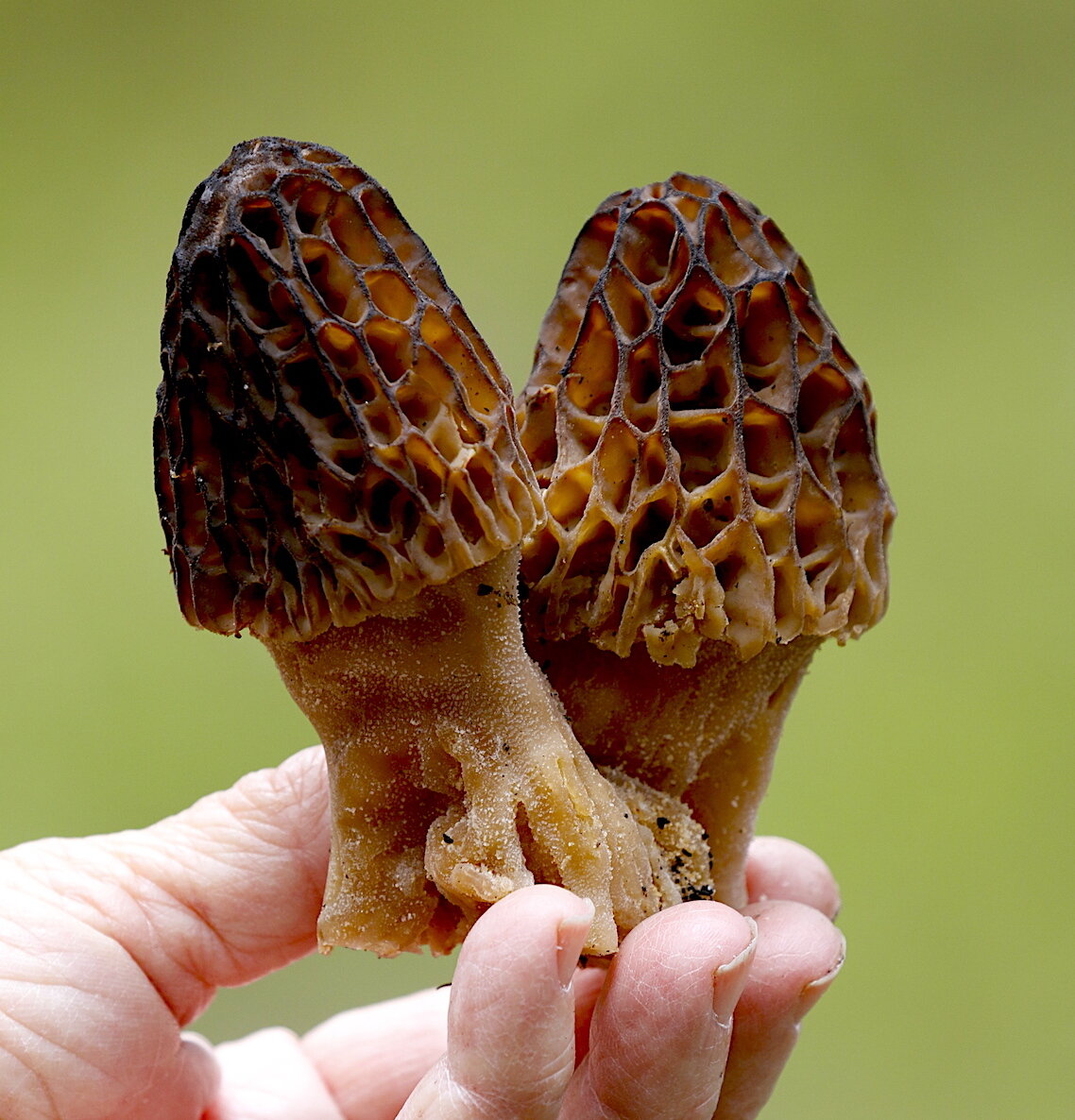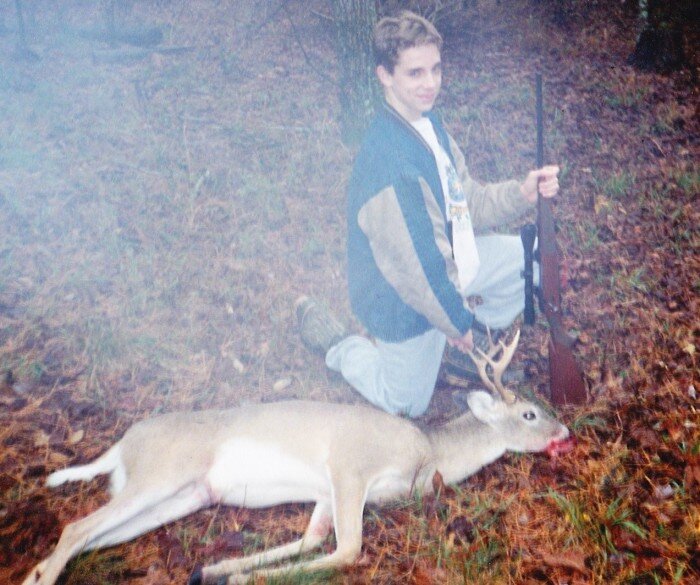Secret Tricks for Finding Morels (Mushrooms!)
I’ve hunted more morel mushrooms than most folks for nearly 40 years, so you’d think I’d have all the secrets down pat. The Mushroom Master. Or something like that. The truth is, the longer I hunt morels, the less I think I understand them. That’s humbling. Outwitted by a mushroom.Well, I’m in good company. The so-called mycologists ($10 word for mushroom expert) are still spewing the same “secrets” they did 40 years ago. Look by old rotting logs, look under fir tree, look only in forests and the list goes on and on. The problem is, that advice doesn’t always apply in the mountains. (If you miss the season, you can buy dried morels here. That'll inspire you to find your own next spring!)
Best Reasons and Seasons for Finding More Morels
After many years of mountain mushroom mashing (yeah, I inadvertently step on some,) I have picked up a few tricks I’ll share with you here. First off, what time of year do you hunt them? Spring, of course. But “spring” is a rather long season, so which part of spring? According to most “experts,” morels are supposed to start popping up like mushrooms (duh) on the first warm day following a spring rain. That sounds great and usually works, but I had a banner day last weekend and there was ice on the morels at 11 AM! It had snowed the night before, and it started again at noon. See, morels don’t listen to the experts, either.So much for the “It HAS to be warm” theory. Nevertheless, as a general rule it is true. Ideal conditions are supposed to be night temperatures down to about 45-degrees F. with daytime temps 60- to 70-degrees F. Throw in a fresh rain and its morel hunting season. But don’t forget, once in a while morels throw you a curve and do whatever they dang well please. Don’t be afraid to hunt then in a late snow storm.Because elevation influences temperature and moisture, morels “pop” at different times in the mountains. Here in the Idaho mountains I usually start finding them the second week of May. In lower elevation Nebraska and Kansas I start seeing them in mid-April. Once they’re up, they can last in edible condition for up to a week.Knowing things like this comes with experience or good information from a local source. Either way, you don’t want to miss the peak morel season since it is so short -- generally a week or two, at most four depending on weather. Once it gets hot and stays hot… morels seem to dry up and blow away. Or at least shrivel away. To be on the safe side, I start hunting a week before the average morel season in any region. In the mountains you can stretch your season if you climb in elevation. Don’t dilly dally. Too many times I’ve found a good batch of morels only to discover that they were already badly deteriorated. I was a week too late. Better a week too early than too late. Each time you prowl the woods you discover something and learn something.One thing I’ve learned during all my ‘shroom hunts is that if I find a motherlode, I usually find it again the next year in the same location. The experts tell us this is because the underground mycelium (the actual plant, not just the fruiting bodies) lives for years and shoots up fruiting parts (the wrinkled morel we pick) every spring. Great news, eh? But that still doesn’t get you any closer to that first morel. Let’s outline where to look for them next.
Most Likely Places to Find Morels
I have one morel hotspot that is a gentle, north-facing slope covered with low, sparse grass and scattered false hellebore in a shallow draw. I often find them in that setting. The north-facing slope might be important because there is less direct sunlight, thus less evaporation of soil moisture, which could be important in our relatively dry mountains. In wetter climates a southern slope might be more productive. Pay attention where you hunt morels and you’ll start to see patterns.Another pattern I’ve seen are morels along the disturbed edges of logging roads. Come to think of it, any recently disturbed areas are often morel-land. When the forest floor is scoured by tractor treads, fallen tree roots, logging operations and the like, the underground roots of the morels mother plant seem to get stimulated to send up more fruiting bodies. Last weekend I was finding as many as two dozen morels in the dirt at the base of wind-toppled pines. Pay attention to disturbed areas! (You might even consider disturbing some spots on your own IF it’s private land with permission of the owner.)Sometimes I find morels in bizarre spots for whatever reason. For instance, I have one grassy hillside of semi-thick grass that, in some years, coughs up lots of mushrooms. That’s not the right habitat for them, according to the experts, and this time I agree. I don’t usually find morels in thick grass. But I do on this site. Never say never, I guess.
My BEST Spot for Mega Morels
I’ve been beating around the bush, so to speak, so now let me get to my favorite, sure-fire, all-time best morel habitat: Last year’s forest fire! Recent burns are magical. I don’t know if it is the ash or what, but morels by the millions pop up in old burns. Those brainy mycologists say it’s a response similar to the disturbed soil one. The underground plant gets stressed and does its best to put out more seed before it’s too late. Reproduce or die, I guess.Here’s an example of how productive a burned forest can be. One year a buddy told me about a burn where he’d found a bunch of morels. I went there and climbed the steep, steep mountain (which I wouldn’t have thought of as morel country.) At some point I looked up the slope at a heart-pounding site; a forest of miniature Christmas trees. Morels! A whole dwarf forest of fresh morels. I went picking nuts before I realized I needed to slow down and pick from side to side or I’d step on as many as I’d pick. I collected 168 morels in a space I could have covered with a 10x12-foot tarp.When hunting any burn, be sure to look under and against fallen trees trunks. I’ve found up to 17 under a single, fallen lodgepole pine. They don’t know they’re emerging under this obstacle. Often they’ll grow at angles around the curving trunk. Similarly, search those burned-out stump holes, tire tracks, and other scuffed up ground. And, following my “looking uphill” technique, get low and scan the ground. From this level morels often stand out. You’d think in a naked burn they’d be easy to spot from any height, but they’re quite camouflaged.After a productive hunt at one new burn, I returned the next weekend with my wife, a buddy and his wife. We all filled 5-gallon buckets in no time at all and headed back to the truck. On the way we were stepping over as many morels as we’d already picked. They were concentrated in a little draw, which illustrates my next tip: If you find a morel always look for others above and below it. Uphill and downhill. I think maybe the spores drift or get washed downhill. Last weekend I found more than usual by doing this, reaffirming this tactic.
Be a Morels Game Hog
Don’t worry about picking too many morels and not leaving enough for seed. The plant is living underground and will make more next year if not this. Besides, you’ll miss plenty. I’ve always said I’d trade what I picked for all those I didn’t see! Last weekend, for example, I scoured an area pretty hard, then sat down to eat a sandwich. That’s when I noticed a mushroom not 8-inches from my toe. I then looked around and spotted seven more. And I’d already combed that area for 30 minutes!So, enough advice already. You now know as much as I, so stop reading and dreaming and get out there. Hit the woods and burns and see how many morels you can find. They aren’t always easy to find, but once you spot them, they’re easy to stalk! Tom Claycomb III is a self-proclaimed nature scavenger who gets much of his protein, carbohydrates and fat from wild plants and animals. Some say he's a bit of a wild animal himself.









